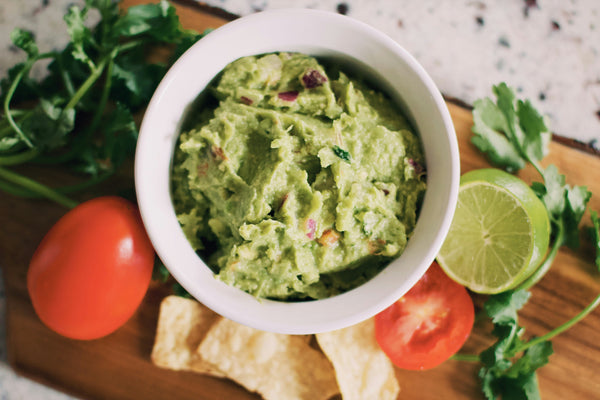Parent's Guide to Sugar for Kids: Understanding the Different Types
share this article
 Sugar is a major part of many foods kids eat daily, but not all sugars are created equal. Understanding the different types of sugar - both natural and added - can help parents make better choices to support their kid’s health and digestion.
Sugar is a major part of many foods kids eat daily, but not all sugars are created equal. Understanding the different types of sugar - both natural and added - can help parents make better choices to support their kid’s health and digestion.
The Two Main Categories of Sugar
There are two primary types of sugar found in food:
-
Natural Sugars – Found naturally in whole foods like fruits, vegetables, and dairy.
-
Added Sugars – Introduced during processing or cooking to enhance sweetness, texture, or preservation.
Each of these categories includes several types of sugar with different effects on the body. Let’s break them down.
1. Natural Sugars (Found in Whole Foods)
Glucose
-
What it is: The body’s primary source of energy.
-
Where it’s found: Naturally present in fruits, vegetables, and honey.
-
How it affects the body: Glucose is quickly absorbed into the bloodstream and used for energy. When combined with fiber (as in whole fruits), it has a slow, steady release, preventing blood sugar spikes.
Fructose
-
What it is: A naturally occurring sugar that is the sweetest of all sugars.
-
Where it’s found: Found in fruits, honey, and some vegetables like carrots and beets.
-
How it affects the body: Fructose is metabolized by the liver and does not spike blood sugar as quickly as glucose. However, excess fructose from processed foods (like high-fructose corn syrup) can strain the liver.
Lactose
-
What it is: The natural sugar found in milk and dairy products.
-
Where it’s found: Breast milk, cow’s milk, yogurt, and cheese.
-
How it affects the body: Requires lactase (an enzyme) for digestion. Some kids have lactose intolerance, meaning they lack enough lactase to break it down, leading to bloating, gas, and discomfort.
Sucrose (Natural Table Sugar)
-
What it is: A combination of glucose + fructose (50/50 split).
-
Where it’s found: Naturally occurs in sugar cane, sugar beets, and some fruits and vegetables.
-
How it affects the body: When consumed in whole foods, the fiber helps slow its absorption. However, processed sucrose (table sugar) can cause rapid blood sugar spikes when consumed in excess.
2. Added Sugars (Found in Processed Foods and Sweets)
High-Fructose Corn Syrup (HFCS)
-
What it is: A processed sweetener made from corn starch that contains a high percentage of fructose.
-
Where it’s found: Sodas, flavored yogurts, fruit juices, packaged snacks, and cereals.
-
Why it’s concerning: Excess HFCS has been linked to fatty liver disease, obesity, and metabolic issues in children. Unlike natural fructose from fruit, HFCS lacks fiber and floods the liver with sugar too quickly.
Agave Syrup
-
What it is: A sweetener made from the agave plant that is higher in fructose than HFCS.
-
Where it’s found: Used as a "natural" sweetener in some health foods, granola bars, and baked goods.
-
Why it’s concerning: While marketed as healthier than table sugar, agave syrup is mostly fructose, which can burden the liver when consumed in large amounts.
Coconut Sugar
-
What it is: A less-refined sugar made from coconut palm sap.
-
Where it’s found: Used in health-focused snacks and baked goods as a more "natural" alternative to white sugar.
-
Is it better? Coconut sugar contains some minerals and fiber, but it still affects blood sugar similarly to regular sugar.
Honey
-
What it is: A natural sweetener produced by bees, consisting of glucose and fructose.
-
Where it’s found: Found in teas, baked goods, granola bars, and yogurt.
-
Is it better? Honey contains antioxidants and enzymes, but it still raises blood sugar and should be used in moderation. Not safe for babies under 1 year old.
Maple Syrup
-
What it is: A natural syrup from maple trees, mostly made of sucrose.
-
Where it’s found: Used in pancakes, waffles, and baking.
-
Is it better? Maple syrup contains some minerals (zinc, manganese) and has a lower glycemic index than white sugar, but it should still be consumed in moderation.
How to Spot Hidden Sugars in Kids’ Foods
Sugar is often hidden under different names on food labels. Look for these common added sugars:
- Cane sugar
- Corn syrup / high-fructose corn syrup
- Brown sugar
- Fruit juice concentrate
- Maltose
- Dextrose
- Molasses
- Rice syrup
A good rule of thumb: If sugar (or one of its hidden names) is in the first three ingredients, it’s probably too much.
Summary
Not all sugars are the same: natural sugars from whole foods (fruit, dairy, vegetables) come with fiber and nutrients, while added sugars from processed foods can lead to health issues if consumed in excess.
Parents can help their kids maintain better gut health, energy, and focus by choosing whole foods, checking labels for hidden sugars, and limiting processed sweeteners like high-fructose corn syrup.




















